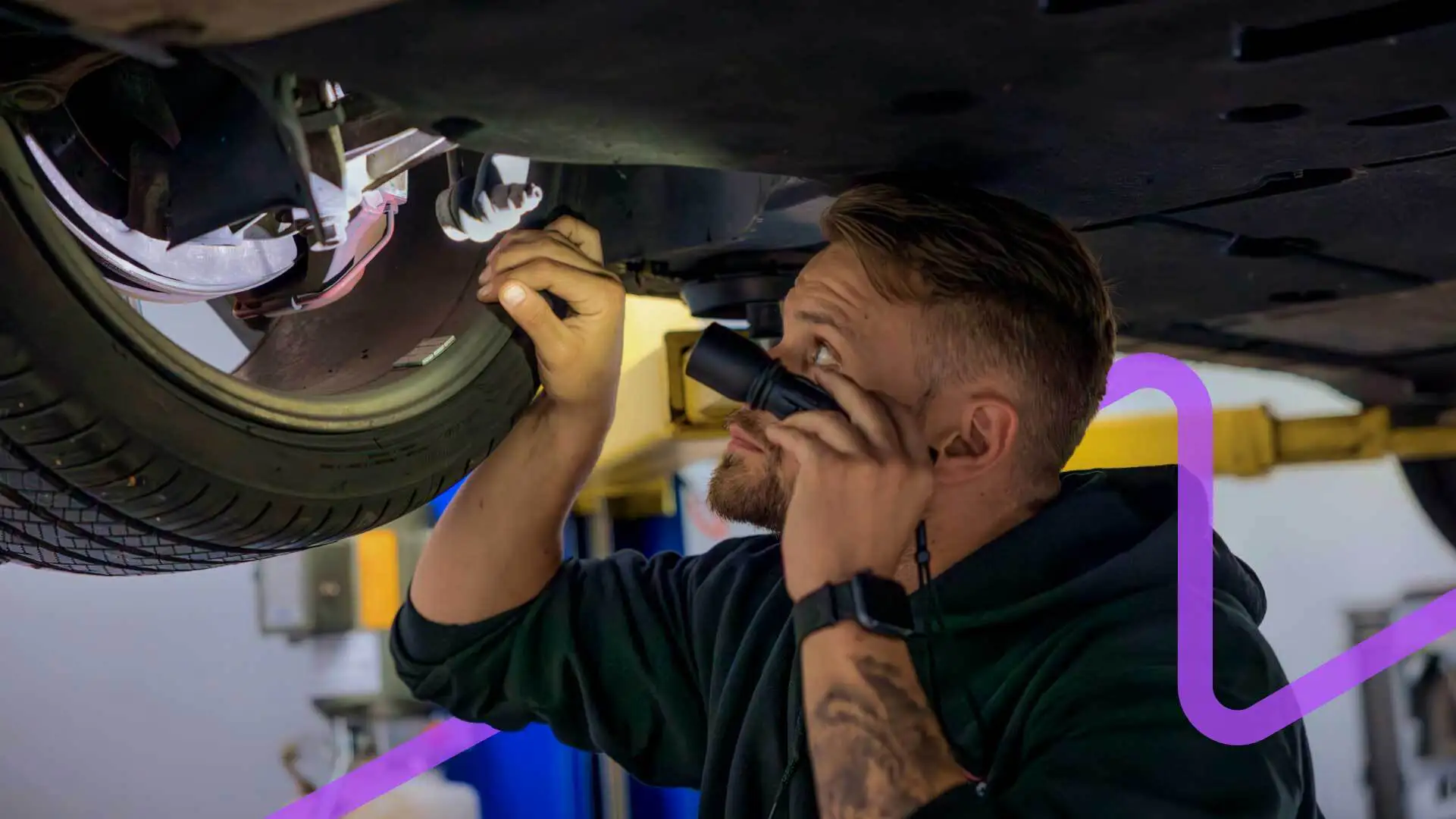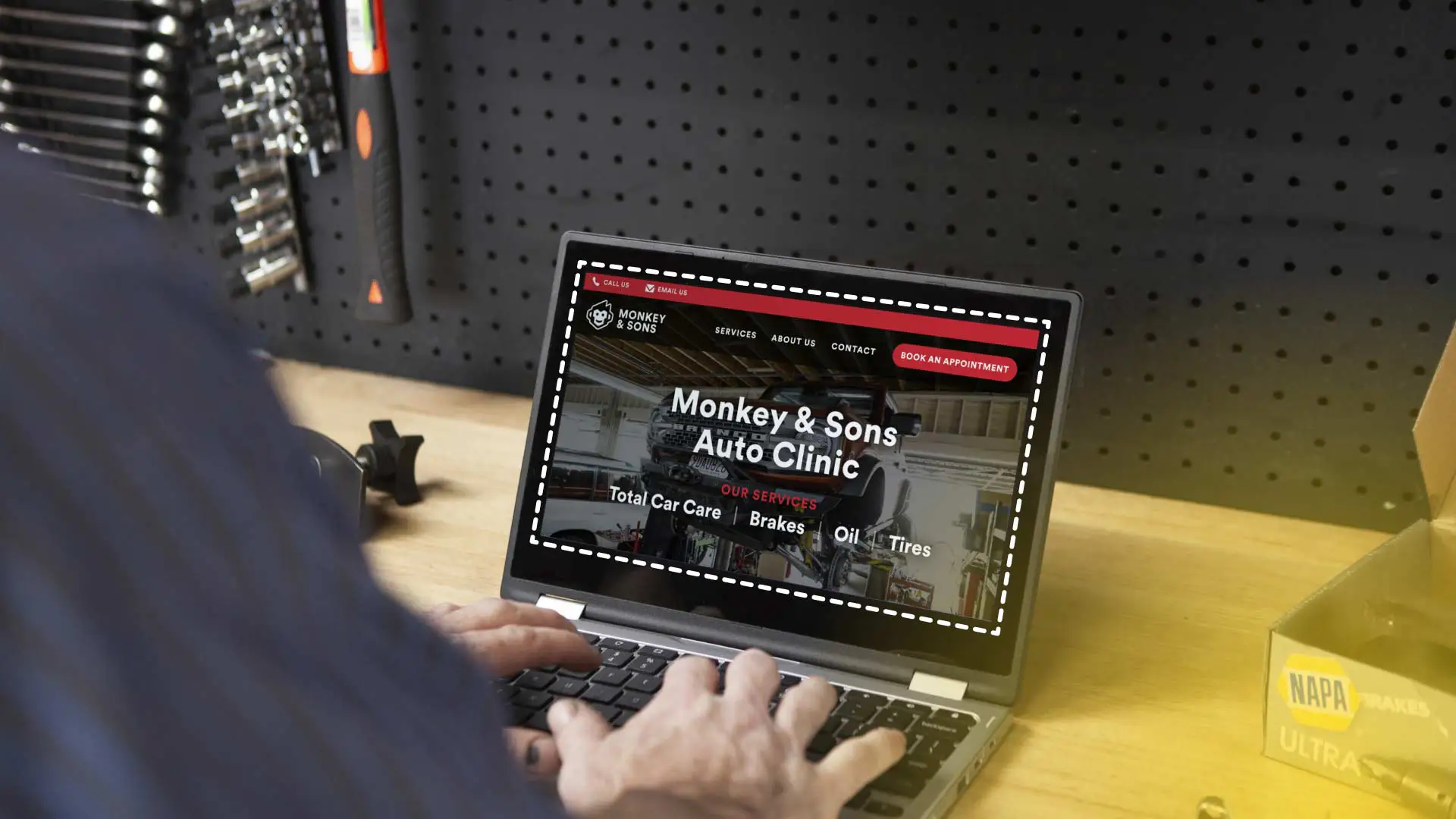In the competitive world of auto repair and maintenance, staying ahead of the curve is essential. Regular vehicle inspections have always been at the core of the business, ensuring customer safety and satisfaction. Traditionally, shops have relied on pdf printable vehicle inspection checklists.
Today digital vehicle inspections can be documented and sent faster, enhancing efficiency. As a shop you can also use them to build up customer trust with videos and photos critical for convincing customers to proceed with necessary work, upsell recommended services and ultimately boost your shop's revenue.
These checklists provide an objective means of evaluating vehicles for safety (which helps preserve the shop’s reputation). Customers rely on your shop’s expertise to keep their vehicles running smoothly and safely, and vehicle inspections are the fundamental service that enable you to identify issues early and provide accurate recommendations.
Whether you prefer performing a 21-point or 100-point inspection or another type, this modern solution ensures your shop delivers top-notch service. Tools like Shopmonkey allow you to easily customize your inspection checklists to your specialty, expertise and customer preferences, ensuring consistent high-quality inspections across your entire team.
Streamlining Operations with Vehicle Inspection Checklists
A vehicle inspection checklist is a car's health report card. Vehicle inspection checklists provide a systematic and organized approach to inspections by creating a standardized process that enables your mechanics to follow. This structure helps to ensure that every crucial component is examined thoroughly, from the engine and brakes to the tires and fluids. By adopting a methodical approach, you reduce the risk of missing potential issues and can address them before they become major, costly problems.
In a busy auto repair shop, human errors can occasionally occur, leading to oversights and mistakes. Vehicle Inspection Checklists act as a safety net by guiding your mechanics through each step of the inspection. This reduces the likelihood of human error, ensuring that no vital information is omitted. By minimizing errors, you not only enhance the quality of your service but also reduce the risk of misdiagnoses, which can lead to customer dissatisfaction and rework. These inspections also act as a vehicle to uncover work needed so the shop can upsell services.
A well-organized inspection process results in faster turnaround times for your customers. When your mechanics follow a standardized checklist, they can complete their inspections more efficiently. This efficiency extends to the reporting phase as well. With digital checklists, the results can be documented and shared with customers in real time, reducing the waiting period for inspection feedback. Faster turnaround times translate to happier customers and improved customer satisfaction.
What is on a Vehicle Inspection Checklist?
The beauty of a vehicle inspection checklist lies in its comprehensiveness. It's like a detailed roadmap, ensuring that no aspect of a vehicle goes unexamined. So, what exactly is typically included in these checklists? Below are some of the common elements that you'll find. Exact inspection points (and number of points) will vary shop to shop depending on whether you are doing a 21-point or 100-point vehicle inspection.
Tires and Wheels: The condition of tires and wheels is often at the top of the list. This includes inspecting tire tread, tire pressure, and the general condition of the wheels, such as any signs of damage or misalignment.
Brakes: The brake system is a critical safety component. Inspections may cover brake pad thickness, rotor condition, brake fluid levels, and the functionality of the brake system.
Engine: The heart of the vehicle, the engine, is thoroughly examined. This includes checking for any leaks, inspecting belts and hoses, and verifying that all engine components are operating as they should.
Fluid Levels: Vehicle Inspection Checklists often include a section dedicated to checking various fluid levels, including engine oil, transmission fluid, coolant, power steering fluid, and brake fluid.
Electrical Systems: Lighting and electrical components are critical for safety. The checklist may encompass the inspection of headlights, taillights, turn signals, and the battery condition.
Suspension and Steering: The suspension and steering system's functionality is vital for a smooth and safe ride. Inspection points may include the condition of shocks, struts, steering components, and wheel alignment.
Exhaust System: The exhaust system's inspection checks for any leaks, damage, or excessive emissions, ensuring the vehicle complies with environmental regulations.
Safety Features: Safety features such as seatbelts, airbags, and other essential components are examined to ensure that they are in proper working order.
Interior and Exterior: The checklist often includes an inspection of the vehicle's interior and exterior for general cleanliness, damage, and wear and tear.
Undercarriage: A thorough inspection of the vehicle's undercarriage is crucial to identify any issues, such as rust, damage, or leaks.
Test Drive: Some checklists conclude with a test drive to evaluate the vehicle's performance on the road. This provides an opportunity to assess how it handles, listens for any unusual noises, and ensures that the brakes and steering respond as expected.
A multi-point vehicle inspection checklist is a more extensive list that covers a wide range of vehicle components. It's like a comprehensive health check for a car, examining everything from the engine to the interior. This type of checklist is ideal for auto shops that want to provide customers with a comprehensive evaluation of their vehicle's condition. It's also beneficial for customers as it helps identify potential issues that may not be apparent during routine maintenance. A multi-point checklist gives both the shop and the vehicle owner a thorough understanding of the car's overall health.
Customer Peace of Mind
Courtesy checks offer several significant advantages to both customers and auto repair shops. These checks provide peace of mind for customers. On the shop side, they build customer trust and incentivize customers to return for needed work. Knowing that their vehicles have passed a thorough inspection will reassure them about their car's reliability and, in turn, trust your shop. If areas need attention or work, the courtesy check informs the customer immediately. While also driving revenue for the shop through increased ROs. Most auto shops are well-prepared to accommodate any necessary repairs discovered during these inspections, making it convenient for customers to address these issues immediately. These inspections are relatively quick, ensuring customers don't have to wait long for the results. Which for the shop means little time invested for a high reward.
For shops, courtesy checks are valuable tools that help build customer trust. Trust is a critical component of retaining loyal customers and gaining additional referrals. These checklists demonstrate a commitment to transparency and customer service, fostering hard-to-earn customer trust. Also, they provide a credible means of increasing revenue. By identifying additional work that might be necessary, courtesy checks allow auto shops to expand their work on each vehicle, increasing the average work order. This win-win situation doesn't just boost revenues but also enhances customer satisfaction.
See how this shop’s technicians use digital vehicle inspections to upsell services:
Vehicle Inspections In Your Shop
Vehicle inspections have always been a core piece of a shop's business, safeguarding customer trust while driving upsells and increasing revenue. Traditionally, you might have relied on printable vehicle inspection checklists or other physical formats to guide your inspections. However, in today's digital age, a modern solution has revolutionized the way you serve your customers — Shopmonkey's digital vehicle inspections.
From tires and wheels to brakes, engine, fluid levels, and safety features, no aspect of a vehicle goes unexamined. Whether you're conducting a 21-point or a 100-point inspection, these checklists provide a comprehensive evaluation, ensuring vehicle safety and performance.
As you continue on your journey in the world of auto care, remember that vehicle inspection checklists are your trusted allies. They make every inspection thorough, efficient, and transparent, contributing to safer and more reliable driving experiences for your customers, and more business for your shop. So, embrace the power of modern solutions and make these checklists an integral part of your auto care service. The road to safer and smoother auto care starts here.




